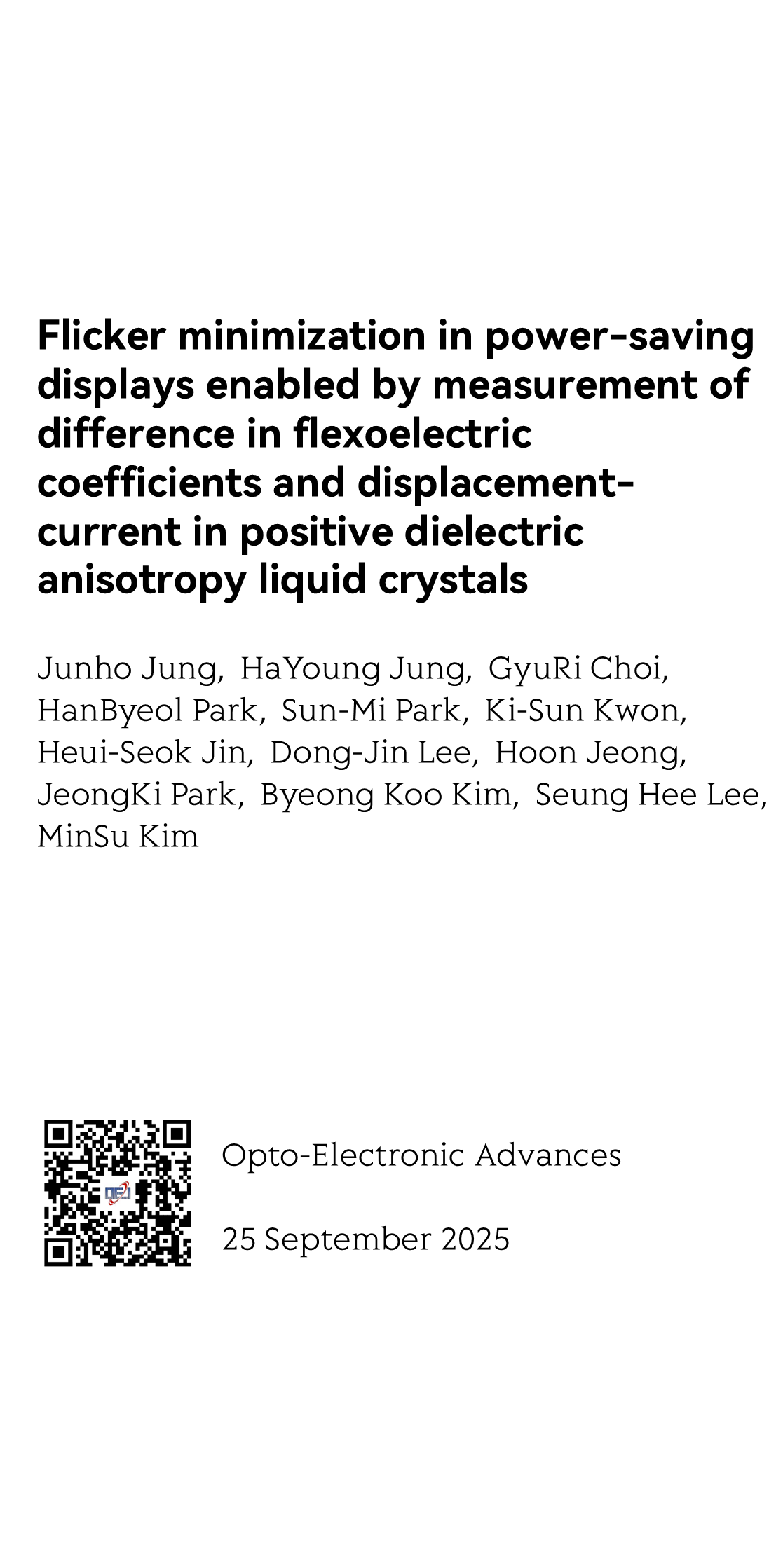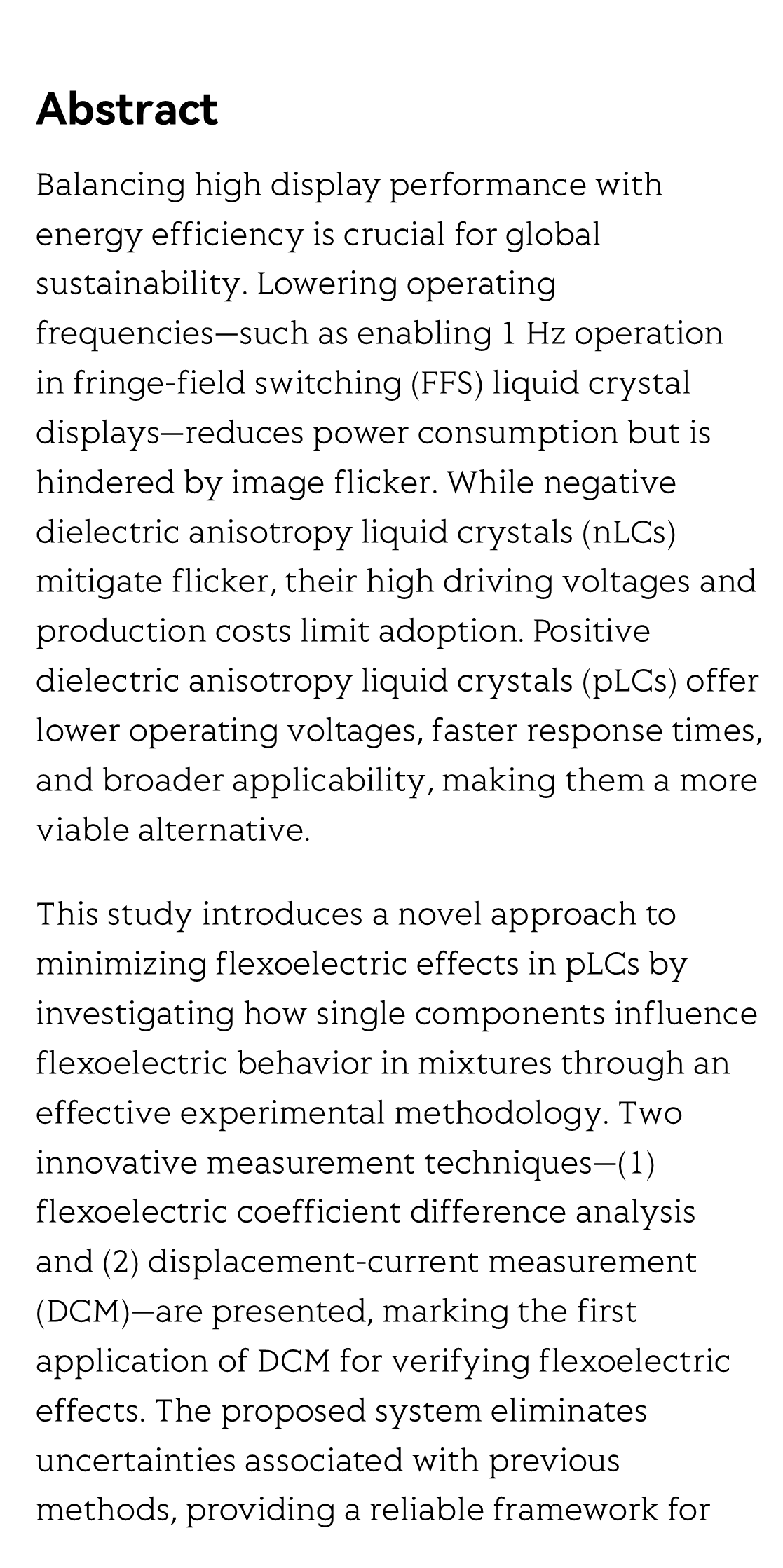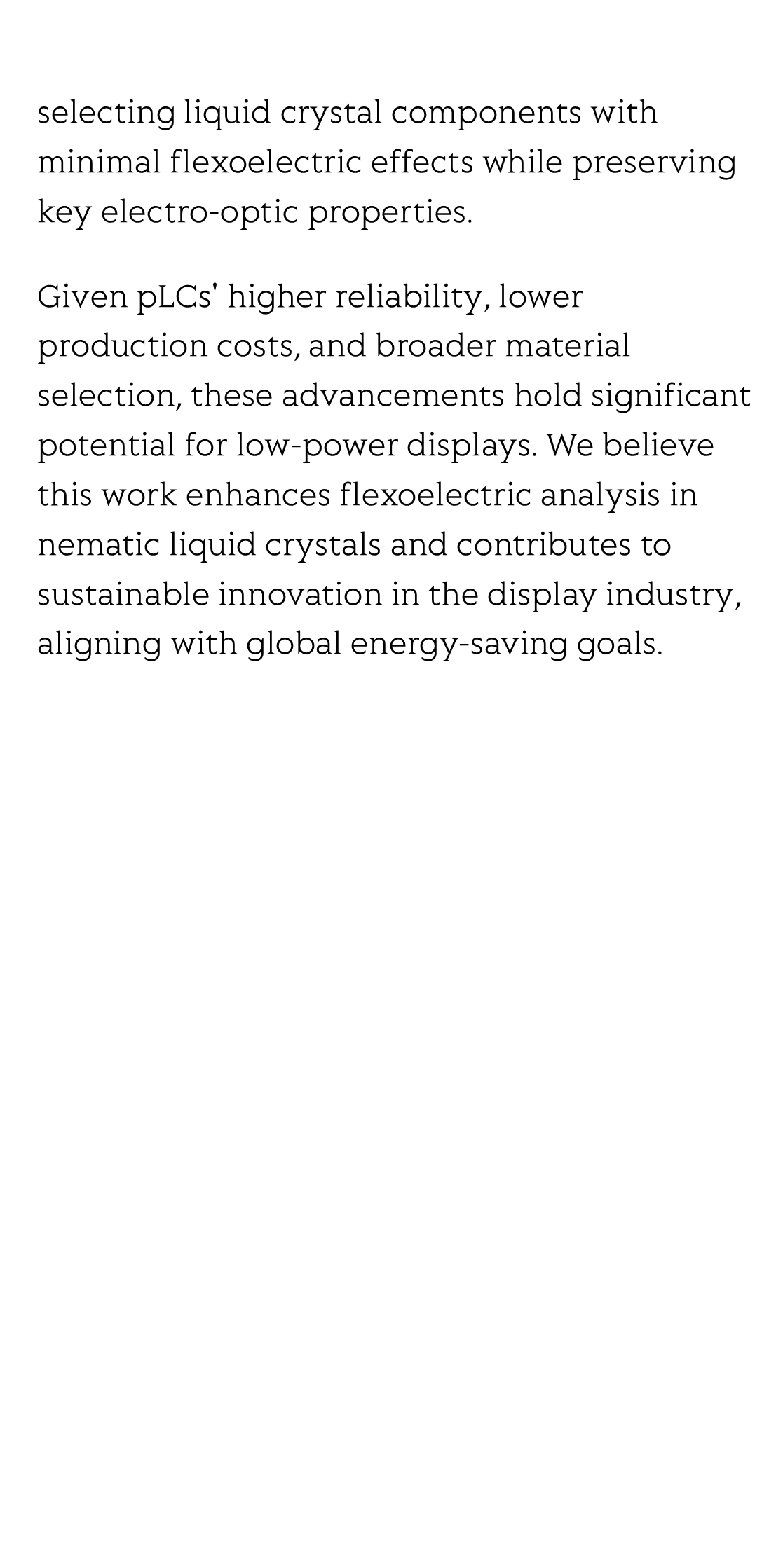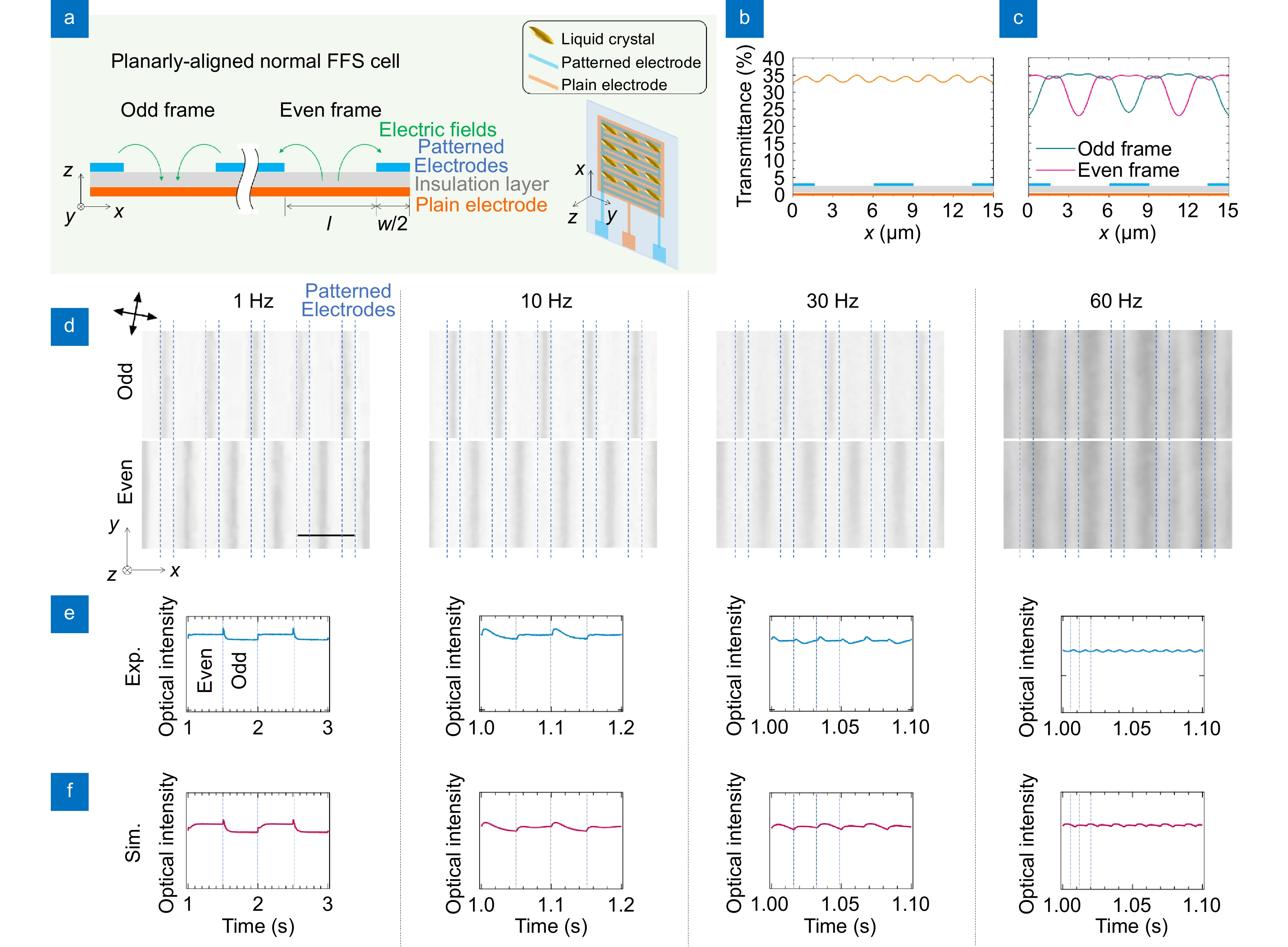(Peer-Reviewed) Flicker minimization in power-saving displays enabled by measurement of difference in flexoelectric coefficients and displacement-current in positive dielectric anisotropy liquid crystals
Junho Jung ¹ ², HaYoung Jung ³, GyuRi Choi ³, HanByeol Park ³, Sun-Mi Park ⁴, Ki-Sun Kwon ⁴, Heui-Seok Jin ⁴, Dong-Jin Lee ², Hoon Jeong ², JeongKi Park ², Byeong Koo Kim ², Seung Hee Lee ¹ ³ ⁵, MinSu Kim ³
¹ Dept. of Polymer Nano Science and Technology, Jeonbuk National University, Jeonju, Jeonbuk 54896, Korea
² LG Display Co., Ltd., Paju, Gyeonggi 10845, Korea
³ Dept. of Nano Convergence Engineering, Jeonbuk National University, Jeonju, Jeonbuk 54896, Korea
⁴ Merck Performance Materials Ltd., Pyeongtaek, Gyeonggi 17956, Korea
⁵Dept. of JBNU-KIST Industry-Academia Convergence Research, Jeonbuk National University, Jeonju, Jeonbuk 54896, Korea
Opto-Electronic Advances
, 2025-09-25
Abstract
Balancing high display performance with energy efficiency is crucial for global sustainability. Lowering operating frequencies—such as enabling 1 Hz operation in fringe-field switching (FFS) liquid crystal displays—reduces power consumption but is hindered by image flicker. While negative dielectric anisotropy liquid crystals (nLCs) mitigate flicker, their high driving voltages and production costs limit adoption. Positive dielectric anisotropy liquid crystals (pLCs) offer lower operating voltages, faster response times, and broader applicability, making them a more viable alternative.
This study introduces a novel approach to minimizing flexoelectric effects in pLCs by investigating how single components influence flexoelectric behavior in mixtures through an effective experimental methodology. Two innovative measurement techniques—(1) flexoelectric coefficient difference analysis and (2) displacement-current measurement (DCM)—are presented, marking the first application of DCM for verifying flexoelectric effects. The proposed system eliminates uncertainties associated with previous methods, providing a reliable framework for selecting liquid crystal components with minimal flexoelectric effects while preserving key electro-optic properties.
Given pLCs' higher reliability, lower production costs, and broader material selection, these advancements hold significant potential for low-power displays. We believe this work enhances flexoelectric analysis in nematic liquid crystals and contributes to sustainable innovation in the display industry, aligning with global energy-saving goals.
Dual-frequency angular-multiplexed fringe projection profilometry with deep learning: breaking hardware limits for ultra-high-speed 3D imaging
Wenwu Chen, Yifan Liu, Shijie Feng, Wei Yin, Jiaming Qian, Yixuan Li, Hang Zhang, Maciej Trusiak, Malgorzata Kujawinska, Qian Chen, Chao Zuo
Opto-Electronic Advances
2025-09-25
Meta-lens digital image correlation
Zhou Zhao, Xiaoyuan Liu, Yu Ji, Yukun Zhang, Yong Chen, Zhendong Luo, Yuzhou Song, Zihan Geng, Takuo Tanaka, Fei Qi, Shengxian Shi, Mu Ku Chen
Opto-Electronic Advances
2025-07-29







